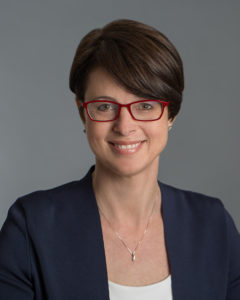
The disparate post-acute care response across the country has alarmed some public policy experts, in part, because of the risks involved if nursing homes are forced to accept COVID-positive hospital patients. As a result, they have released a white paper that includes, among other recommendations, that only specialized skilled nursing facilities and other adequate post-acute care facilities accept COVID-positive patients.

“We have to completely rethink and disrupt and upend how we use post-acute care given the realities of the population that nursing homes serve and their lack of access to PPE [personal protective equipment] and lack of access to separate units,” Anne Tumlinson, CEO of ATI Advisory, a research and advisory services firm in Washington, D.C., told McKnight’s Monday. “Otherwise, you are exacerbating a public health crisis.”
Other agencies, such as the Centers for Medicare & Medicaid Services, have offered guidance regarding designating separate COVID-19 facilities and units. However, the white paper “Post-Acute Preparedness in a COVID-19 World” offers a comprehensive post-acute care strategy for four stages of the crisis.
“I would love if states read our paper and said let’s take another five minutes and pull people together and do this differently,” said Tumlinson, one of the authors of the report. The other report authors are: William Altman, former chief strategy officer with Kindred Healthcare; Jon Glaudemans, senior advisor of ATI Advisory; Howard Gleckman, senior fellow at The Urban Institute; and David Grabowski, Ph.D., of the Department of Health Care Policy at Harvard Medical School.
‘Relief valve’
In the immediate surge phase, the white paper recommends that the post-acute care system serve as a “relief valve” for hospitals to offload non-COVID patients and free up space for inpatient capacity during the surge. Strategies include using waiver authority to move non-COVID patients to non-acute hospitals, such as inpatient rehabilitation facilities or long-term acute care hospitals.
It also recommends that the post-acute care system assess capacity of SNFs and other settings to accept non-COVID patients. However, it offers the caveat that if there is not accurate testing equipment available, SNFs should not accept discharges from acute care hospitals. Those SNFs that can play the same role as IRFs and LTACHs regarding non-COVID discharges should have separate units and/or the ability to isolate post-acute patients from long-stay residents; have proper infection control capabilities and equipment; and staff availability and training.
COVID-positive discharges
For the COVID-positive hospital discharges, the paper directs the post-acute care system to identify separate, specialized capacity among IRFs, LTACHs and SNFs for COVID-positive discharges. These include empty buildings or units that public health leaders can repurpose to permit the safe discharge or transfer of recovering COVID-19 patients.
Specialized SNFs should have the management, clinical team and staff to care safely for COVID-positive patients. They should have experienced medical directors, separate units and the ability to isolate patients, negative pressure rooms, infection control capability and adequate personal protective equipment supplies. The surge response implies a thorough assessment of capacity among IRFs, LTACHs and specialized SNFS, and where they are, the paper suggests.
Moving forward
The white paper also provides strategies for the summer, following the surge; once the surge has ended; and moving into the future. Strategies for the summer include prioritizing infection control and early treatment protocols in nursing homes and other locations with vulnerable populations; implementing hospital-at-home programs through virtual home health and other means; and formalizing optimal non-COVID and COVID post-acute placement options. The latter requires fully assessing market providers and creating a 12-month strategy for relieving hospital capacity at various intervals.





